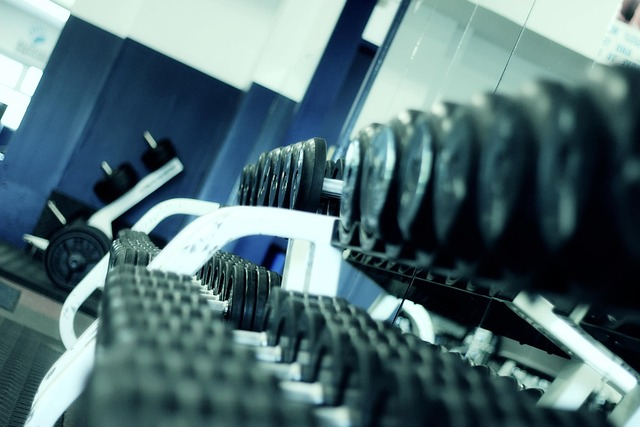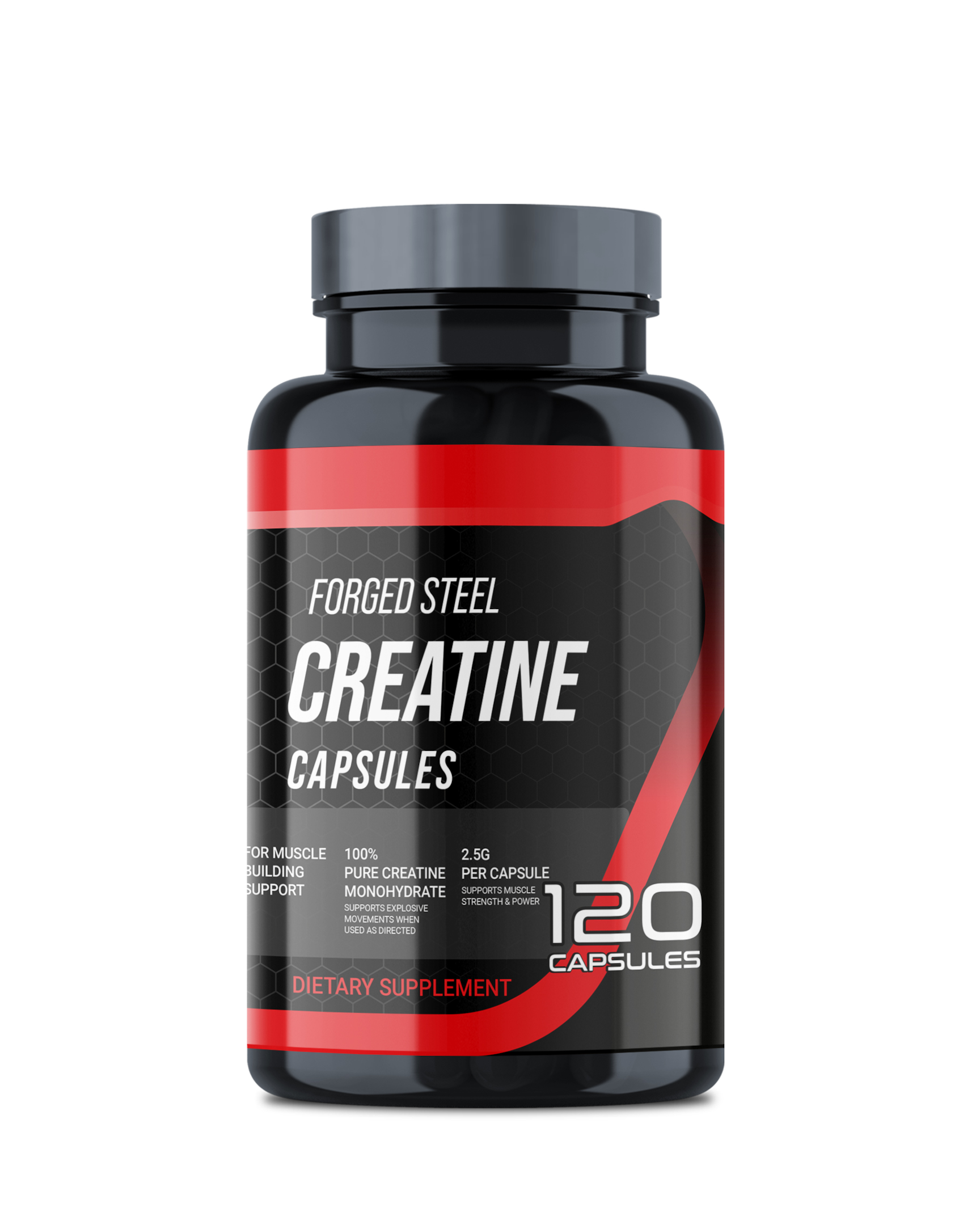Creatine, a naturally occurring compound found in small amounts within meat and fish, has gained considerable attention in the world of fitness and weight training. While it's often associated with bodybuilders and strength athletes, creatine monohydrate offers benefits beyond muscle mass. In this comprehensive article, we'll delve into the science behind creatine supplementation, its impact on physical performance, and its role in overall health.

What Is Creatine Monohydrate?
Creatine monohydrate, an essential amino acid, plays a crucial role in the synthesis of adenosine triphosphate (ATP), which serves as the primary fuel for muscle contractions.Although our bodies naturally produce creatine, supplementing with creatine monohydrate allows sprint athletes to saturate their intramuscular phosphocreatine stores and free-creatine levels. This saturation cannot be achieved through diet alone.
Creatine is a naturally occurring compound that plays a fundamental role in metabolism within the body, particularly during short bursts of high-intensity physical activity. Chemically, it is derived from amino acids, primarily arginine, glycine, and methionine, and is predominantly stored in skeletal muscle tissue.

Understanding the Biochemistry of Creatine
The primary function of creatine is to facilitate the rapid regeneration of adenosine triphosphate (ATP), the primary energy currency of cells, during short bursts of high-intensity activity. ATP is utilized for various cellular processes, including muscle contraction, and is rapidly depleted during intense exercise. Creatine serves as a reservoir of high-energy phosphate groups, which can be readily donated to ADP (adenosine diphosphate) to regenerate ATP through the enzyme creatine kinase.
Creatine exists in two main forms: free creatine and phosphocreatine (PCr). Free creatine is present in the cytoplasm of muscle cells, where it undergoes reversible phosphorylation to form phosphocreatine in the presence of ATP. Phosphocreatine acts as a readily available source of high-energy phosphate groups, enabling the rapid resynthesis of ATP during periods of increased energy demand, such as during short bursts of intense exercise.
The synthesis of creatine is tightly regulated by several enzymes, including arginine:glycine amidinotransferase (AGAT) and guanidinoacetate N-methyltransferase (GAMT), which catalyze the conversion of arginine and glycine to guanidinoacetate, and guanidinoacetate to creatine, respectively. Creatine synthesis is influenced by dietary intake of precursors, such as arginine and glycine, as well as factors like hormonal regulation and metabolic demand.
While the body can synthesize creatine endogenously, it can also be obtained exogenously through dietary sources, particularly animal-derived foods and animal products like meat and fish. However, the amount of creatine obtained through diet is relatively small compared to the body's total creatine pool, making dietary intake alone insufficient to maximise intramuscular stores, especially when engaged in intense training regimens.

Creatine is converted into phosphocreatine, which serves as a rapidly mobilisable reserve of high-energy phosphate groups. These phosphate groups are crucial for the synthesis of adenosine triphosphate (ATP), the primary energy currency of cells. During brief, intense bursts of activity, such as sprinting or weightlifting, ATP is rapidly depleted. Phosphocreatine helps replenish ATP levels by donating phosphate groups, thereby sustaining energy production and supporting muscle contraction.
Creatine is naturally synthesised in the liver, kidneys, and pancreas, and can also be obtained from dietary sources such as meat and fish. However, the amount of creatine obtained through diet is often insufficient to maximize its performance-enhancing effects, particularly for people engaged in intense training regimens. As a result, many athletes turn to creatine supplementation to increase intramuscular stores and optimise energy availability during exercise.
Creatine supplementation typically involves a loading phase, during which individuals consume a higher dose of creatine for a brief period, followed by a maintenance phase of lower daily doses. The loading phase saturates muscle creatine levels more rapidly, while the maintenance phase helps maintain elevated levels over time. Common forms of creatine supplementation include creatine monohydrate, creatine ethyl ester, and buffered creatine, each with varying degrees of solubility and absorption rates.
Microcrystalline cellulose, a commonly used bulking agent and excipient in pharmaceuticals and dietary supplements, is also frequently employed in the production of creatine supplements. This inert substance serves as an essential component in creatine formulations, contributing to the consistency, stability, and overall quality of the product.
The Pros of Taking Creatine
1. Increased Muscle Power and Strength
Creatine monohydrate has been shown to improve muscle power and strength, even in endurance athletes. In a study conducted in 2019, it was found that well-trained triathletes experienced notable enhancements in cycling power output following creatine supplementation, resulting in enhanced performance during the cycling stages of triathlon events. Whether you're a cyclist, runner, or swimmer, creatine tablets can help enhance your physical capabilities.
2. Enhanced ATP Production
By saturating creatine levels, you can improve ATP production. ATP is crucial for high-intensity exercise, providing the energy needed for heavy lifting and bursts of effort. Creatine supplementation allows your muscles to regenerate ATP faster, leading to more reps during training sessions.

3. Brain Health Benefits
Emerging evidence suggests that creatine may offer brain health benefits. While its primary role is in physical performance, recent research highlights its potential positive effects on cognitive function and overall well-being.

How to Supplement with Creatine
To reap the benefits, consider the following guidelines:
-
Dosage : Take five grams of creatine monohydrate daily in capsule form.
-
Timing : Time of day doesn't significantly affect effectiveness. You can take it pre- or post-session.
-
Duration : Continual consumption of 5g/day serving for at least 28 days is necessary to increase creatine stores.
Addressing Common Concerns
Will Creatine Show Up on a Drug Test?
Creatine monohydrate is not a banned substance, but it's essential to purchase from reliable sources. Look for products with certifications to avoid any issues.
Creatine Beyond Exercise Performance
While creatine primarily enhances physical performance, it may also have positive effects on brain health and overall vitality.

Additional Benefits of Creatine
1. Improved Stamina
Beyond strength gains, creatine can enhance performance. Studies have shown that creatine supplementation increases time to exhaustion during high-intensity activities like sprinting and interval training. By buffering ATP levels, creatine delays fatigue, allowing you to push harder and longer.
2. Muscle Recovery
Creatine supports muscle recovery by reducing inflammation and oxidative stress. After intense workouts, creatine helps repair damaged muscle fibers, minimizing soreness and promoting faster healing. Consider taking creatine post-workout to aid recovery.
3. Hydration and Cell Volumization
Creatine draws water into muscle cells, increasing cell volume. This cell volumization not only enhances muscle fullness but also improves hydration status. Well-hydrated muscles function optimally, leading to better performance and reduced risk of cramps.

Practical Tips for Creatine
1. Consistency Matters Most
For every person taking creatine the right way, there are probably two who aren't. It's regrettable that the simplicity of the most effective methods for creatine consumption often goes unnoticed. If you've been relying on sporadic intake of creatine monohydrate through pre-workout supplements, assuming it would suffice for significant gains, chances are it may not meet your expectations. Apologies for any disappointment this may bring.
Considering this, there are two approaches to ensure your blood creatine levels reach optimal levels: the loading protocol and the daily low-dose protocol. Let's delve into both options:

Method 1: Creatine Loading
A common approach to creatine supplementation involves an initial "loading phase" aimed at saturating muscle stores, followed by a "maintenance phase" to sustain optimal levels.
-
his method has been demonstrated to effectively boost intramuscular creatine concentrations. During the loading phase, individuals typically consume higher doses, typically around 20-25 grams per day, divided into 4-5 smaller doses, for a duration of 5-7 days. After this initial loading period, a lower daily maintenance dose of 3-5 grams is sufficient to uphold elevated creatine levels.
-
Increased muscle power and strength : Creatine loading can lead to significant improvements in performance.

Method 2: Daily Low-Dose Protocol
An alternative approach is to skip the loading phase altogether and start with a daily low dose of creatine monohydrate tablets. This method involves taking a consistent, smaller dose (usually around 3-5 grams or one tablet per day) without the initial loading phase.
Pros:
- Simplicity : No need for a loading phase.
- Fewer side effects : Lower risk of gastrointestinal discomfort.
Cons:
- Slower saturation : It may take longer to fully saturate muscle creatine stores compared to the loading method.

Additional Tips for Beginners
- Start with a low dose : Begin with a lower dose and gradually increase it based on your training demands.
- Stay hydrated : Drink plenty of water while taking creatine capsules.
- Monitor progress : Regularly assess your progress and adjust your dosage as needed.
Remember, consistency is key. Choose the method that aligns with your goals and lifestyle, and consult with a healthcare professional if you have any concerns. Creatine is a safe and effective supplement when used correctly, so enjoy the benefits it brings to your fitness journey!
Let's continue discussing the benefits of creatine monohydrate supplementation, focusing on how it aligns with your fitness goals varied diet and daily intake. Whether you're an athlete striving for peak performance or someone seeking good value in dietary supplements, creatine can play a crucial role.

Creatine Daily: A Key Component of Your Fitness Journey
1. Enhanced Performance
Incorporating creatine into your daily routine can significantly enhance physical performance. Whether you're lifting weights, sprinting, or engaging in high-intensity exercises, creatine provides that extra boost. It fuels your body during successive bursts of short-term, intense efforts, allowing you to push harder and achieve your fitness goals.
2. Optimal Daily Intake
To reap the benefits, aim for a daily intake of 2 creatine monohydrate tablets. Consistency matters take it consistently to maintain optimal creatine levels. Whether you prefer capsules, tablets, or powder, find what suits your lifestyle and stick to it. Remember, it's not just about the occasional big tablets; it's about daily commitment.
3. Good Value for Your Investment
Creatine is one of the most researched and cost-effective supplements available. When you consider the performance gains, muscle growth, and overall health benefits, it's an excellent investment. Look for good quality creatine products—those without unnecessary additives and enjoy the increase performance it brings to your fitness journey.
Exploring Alternatives and Complementary Supplements to Creatine
While creatine supplementation has been widely recognised for its potential to enhance athletic performance and support muscle growth, there are several alternative and complementary supplements that athletes may consider incorporating into their regimen. These supplements, often used in conjunction with creatine or as alternatives for individuals who may not respond well to creatine, offer additional avenues for optimising performance, promoting recovery, and supporting overall health and well-being. Here we delve into some of the key alternatives and complementary supplements to creatine.
1. Beta-Alanine
Beta-alanine is a non-essential amino acid that plays a crucial role in buffering lactic acid accumulation during high-intensity exercise. By increasing muscle carnosine levels, beta-alanine supplementation can delay the onset of muscle fatigue, particularly during repetitive, short-duration activities like sprinting or weightlifting. When combined with creatine, beta-alanine may synergistically enhance performance benefits, making it a popular choice among athletes seeking to maximise their training gains.
2. Branched-Chain Amino Acids (BCAAs)
BCAAs, including leucine, isoleucine, and valine, are essential amino acids that serve as building blocks for muscle protein synthesis and energy production. Supplementation with BCAAs has been shown to promote muscle recovery, reduce exercise-induced muscle damage, and attenuate fatigue during prolonged exercise. While BCAAs may not directly replace creatine's role in energy metabolism, they can complement creatine supplementation by supporting muscle repair and recovery processes, particularly during periods of intense training or caloric restriction.
3. L-Carnitine
L-Carnitine is an amino acid derivative that plays a critical role in fatty acid metabolism and energy production within the mitochondria. By facilitating the transport of fatty acids into the mitochondria for oxidation, L-carnitine supplementation can enhance energy production, improve endurance, and support fat metabolism during exercise. While L-carnitine may not directly replace creatine's role in ATP regeneration, it can complement creatine supplementation by promoting alternative energy pathways and enhancing overall metabolic flexibility.
4. Nitric Oxide (NO) Boosters
NO boosters, such as citrulline and arginine, are precursors to nitric oxide, a vasodilator that helps regulate blood flow and oxygen delivery. Supplementation with NO boosters can increase nitric oxide production, leading to improved blood flow, nutrient delivery, and muscle pump during exercise. While NO boosters do not directly replace creatine's role in energy metabolism, they can complement creatine supplementation by enhancing blood flow and nutrient uptake, potentially improving exercise performance and recovery.
5. Adaptogens
Adaptogens are a class of herbs and botanical extracts that help the body adapt to stress, improve resilience, and promote overall well-being. Popular adaptogens include Rhodiola rosea, Ashwagandha, and Ginseng, which have been shown to reduce fatigue, and support immune function. While adaptogens may not directly impact energy metabolism like creatine, they can complement creatine supplementation by promoting stress resilience, improving recovery, and supporting overall health, particularly during periods of intense training or competition.

Conclusion
Creatine monohydrate is a valuable supplement for athletes and fitness enthusiasts alike. Whether you're aiming for better performance, increased strength, or improved cognitive function, creatine can be a powerful addition to your regimen. Remember to consult with a healthcare professional before starting any new dietary supplement.
In summary, creatine monohydrate offers a multitude of benefits:
- Increased muscle power and strength
- Enhanced ATP production
- Potential brain health benefits
Whether you're an athlete, weightlifter, or simply someone looking to optimise their physical performance, consider incorporating creatine into your daily routine. With its proven track record and positive reviews, creatine remains a staple in the world of sports nutrition.
Remember, consistency is key. Combine creatine supplementation with a balanced diet, regular exercise, and a healthy lifestyle for optimal results. And as always, consult with a healthcare professional before making any significant changes to your dietary or exercise habits.

